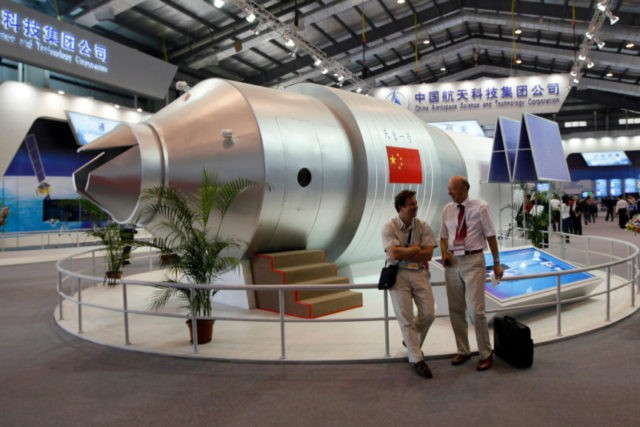Michigan is on alert after it was revealed that the Chinese space station expected to re-enter the Earth’s atmosphere could land in the state’s southern peninsula.
The Detroit Free Press reported that Michigan Gov. Rick Snyder activated the state’s Emergency Operations Center Sunday to monitor China’s Tiangong-1 space station, which is expected to re-enter the atmosphere between 8:18 p.m. EDT Sunday evening and April 2.
Although experts say it is unlikely the space station would hit the area, debris from the 8.5-ton space station could potentially hit Michigan’s southern lower peninsula, according to the government contracting organization Aerospace Corporation.
Officials from the Emergency Operations Center say the debris is likely to contain hydrazine, a highly toxic substance with corrosive properties, and urge individuals who suspect they may have spotted debris from the space station to call 911 and stay at least 150 feet away from the rubble.
Officials say that the odds of getting struck by the debris is 1 million times less than the odds of winning the lottery—or less than one in a trillion.
“When considering the worst-case location … the probability that a specific person (i.e., you) will be struck by Tiangong-1 debris is about 1 million times smaller than the odds of winning the Powerball jackpot,” according to Aerospace, a government contractor that provides services to national-security space programs.
CBS News reported that the space station’s orbit could cause the debris to fall to Earth anywhere between the latitudes of 43 degrees north and 43 degrees south—an area that covers most of the United States, Africa, southern Europe, China, South America, and Australia.
Russia, northern Europe, and Canada are considered to be outside the space station’s current trajectory.
Experts predict that only ten percent of the spacecraft would reach Earth, while the other 90 percent gets burned up in Earth’s atmosphere.
Tiangong-1, China’s first space station, served as a test platform for docking procedures and hosted two manned missions. The station launched in 2011 and the last crew left the station 2013. The Chinese cut off contact with the station in 2016—shortly before the launch of Tiangong 2.

COMMENTS
Please let us know if you're having issues with commenting.